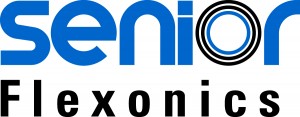How to Specify a Single Expansion Joint
Special Note: If a non-standard flange rating is required or a non-standard weld end thickness is required or if the fittings are nonstandard materials, those preferences must be stated along with the part number.
Step 1 Nominal Pipe Size
Expansion joints are specified with part numbers starting with the nominal pipe size. If the part is metric, the pipe size should have an “M” suffix
so that all units are understood to be Metric (millimeters and Kg/Cm2).
Step 2 Style
Identify the style (AS for Single Unrestrained, AH for Hinged, AG for Gimbal, AT for Tied) using the illustrations at the top of each data page.
Step 3 End Fitting
Choose the type of each end fitting required (W for weld end, F for forge flange, P for plate flange, A for angle flange, V for van stone flange) using
the illustrations at the top of each odd numbered data pages 22-53. Review the bill of material information at the top of each even numbered pages 22-53 to understand the standard flange rating, weld end thickness, and materials of construction that will be applied.
Step 4 Pressure Rating
Choose the working pressure required. If the required pressure is between one of the listed values, use the higher of the two values listed in the catalog. If the required pressure is above the highest value listed, indicate the required pressure in the part number and the factory will custom design an expansion joint for the application.
Step 5 Select Number of Convolutions
Select the number of convolutions based on movement capability and/or spring rate. This is a simple iterative process. Utilizing the movement data for the size and pressure class required, compare the movements required with the movements available for a given convolution count. An acceptable design satisfies the following equation.
Required Axial Movement +Required Lateral Movement + Required Angular Movement < 1
Catalog Rated Axial Catalog Rated Lateral Catalog Rated Angular
Step 6 Select Letter Code
Select the letter code for accessories and options (L for Liner, HL for heavy liner, P# for Purges, C for Cover, PT for ply testable, RT for Red Top
leak detector). Separate multiple options with commas to avoid confusion.
Step 7 Select Bellows Material
Select the bellows material. If no entry is made, the bellows material is ASTM A240 T304 stainless steel
Step 8 Basic Part Number
The basic part number is now complete. For a Single untied 12” – 150 psig weld end expansion joint with T304L bellows and a liner and cover designed for 5000 cycles at 1” axial compression and .5” lateral offset the basic part number reads:
12 – AS – WW – 150 – 20 – L,C – 304L
Summary:
It is necessary to have the required movement information included in the description so that liner, cover, and limit rods can be designed with proper clearances.
